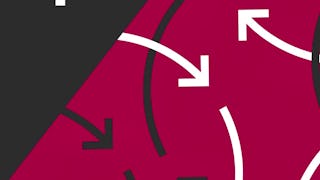Through a combination of video lectures, demonstrations, and hands-on practice, this course will teach learners about the main components of an operating system and how to perform critical tasks like managing software and users and configuring hardware.


您将获得的技能
- Linux Administration
- Linux
- Command-Line Interface
- Microsoft Windows
- Systems Administration
- User Accounts
- System Monitoring
- Package and Software Management
- Operating System Administration
- File Management
- Remote Access Systems
- File Systems
- Technical Support and Services
- Virtualization
- OS Process Management
- Operating Systems
- Windows PowerShell
要了解的详细信息

添加到您的领英档案
18 项作业
了解顶级公司的员工如何掌握热门技能

积累 Support and Operations 领域的专业知识
- 向行业专家学习新概念
- 获得对主题或工具的基础理解
- 通过实践项目培养工作相关技能
- 通过 Google 获得可共享的职业证书

该课程共有6个模块
Welcome to the Operating Systems course of the IT Support Professional Certificate! In the first module of this course, we will cover the basics of Windows and Linux operating systems (OS). We will learn about how directories and files work in Windows and Linux OS. You will also learn practical ways to manipulate files and directories in the Windows graphical user interface (GUI), Windows command line interface (CLI), and Linux shell. By the end of this module, you will interact with files and directories and perform basic text manipulation in Windows and Linux OS.
涵盖的内容
32个视频10篇阅读材料3个作业2个应用程序项目1个插件
In the second module of this course, we'll learn about configuring users and permissions in Windows and Linux OS. As an IT Support Specialist, it's important to know how to grant the appropriate permissions to users and groups for both Windows and Linux OS. By the end of this module, you will know how to add, modify, and remove users for a computer and for specific files and folders by using the Windows GUI, Windows CLI, and Linux shell.
涵盖的内容
16个视频7篇阅读材料2个作业2个应用程序项目
In the third module of this course, we'll learn about package and software management in Windows and Linux OS. It's important to know how package installs work and how devices and drivers are managed within these operating systems. We will also learn about different packaging and file compression methods. By the end of this module, you will know how to create, update, and remove software by using the Windows GUI, Windows CLI and Linux shell.
涵盖的内容
16个视频20篇阅读材料4个作业2个应用程序项目
In the fourth module of this course, we'll learn about how filesystems work for Windows and Linux OS. We'll learn about filesystem types and why they're different for certain OS. We'll learn about disk partitioning and virtual memory and why these are so important for an IT Support Specialist's role. We'll also cover ways mount and unmount filesystems, read disk usage, and repair filesystems. By the end of this module, you will partition and format a disk drive yourself in both Windows and Linux.
涵盖的内容
16个视频12篇阅读材料2个作业2个应用程序项目
In the fifth module of this course, we'll explore process management. As an IT Support Specialist, it is important to use system tools to read and understand process statuses of machines. We will cover ways to start and terminate a process in Windows and Linux. We will also apply troubleshooting tools to solve problems with processes and resources. By the end of this module, you will use Windows and Linux commands to do practical process maintenance.
涵盖的内容
14个视频11篇阅读材料4个作业2个应用程序项目
Congratulations, you've made it to the final module in the course! In the last module of this course, we will cover some of the practical aspects of operating systems that you'll use all the time in IT Support. We will cover remote access and how to troubleshoot a computer from afar. We'll explore virtualization tools to manage and remove virtual instances, use logs for system monitoring, and show you a few different techniques for OS deployment. By the end of this module, you will apply all the skills from this course to debug some issues within Windows and Linux OS. Good luck!
涵盖的内容
16个视频14篇阅读材料3个作业2个应用程序项目
获得职业证书
将此证书添加到您的 LinkedIn 个人资料、简历或履历中。在社交媒体和绩效考核中分享。
位教师

提供方
从 Support and Operations 浏览更多内容
人们为什么选择 Coursera 来帮助自己实现职业发展




学生评论
29,300 条评论
- 5 stars
77.87%
- 4 stars
16.52%
- 3 stars
3.68%
- 2 stars
1%
- 1 star
0.90%
显示 3/29300 个
已于 Apr 1, 2019审阅
This is my most favorite module module, especially the Linux, which is my all time favorite OS ever enjoy learning, working Programing, and configuring, and will continue enjoying til the end of time.
已于 Nov 16, 2023审阅
I completed 97% of this course and I have one more Linux Qwiklabs to do and each time, I tried to finish the lab, I receive a message saying my quota has been exceeded. Can you tell me what to do?
已于 Nov 27, 2021审阅
Great course, lots of very challenging and useful information. You'll learn about Linux and some of the inner workings of Windows, plus lots of tools and programs that are really useful. Great course!
常见问题
To access the course materials, assignments and to earn a Certificate, you will need to purchase the Certificate experience when you enroll in a course. You can try a Free Trial instead, or apply for Financial Aid. The course may offer 'Full Course, No Certificate' instead. This option lets you see all course materials, submit required assessments, and get a final grade. This also means that you will not be able to purchase a Certificate experience.
When you enroll in the course, you get access to all of the courses in the Certificate, and you earn a certificate when you complete the work. Your electronic Certificate will be added to your Accomplishments page - from there, you can print your Certificate or add it to your LinkedIn profile.
更多问题
提供助学金,






